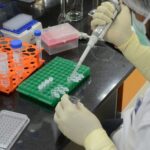At Local MD, we recognise that obesity is far more than a matter of willpower or lifestyle choice alone. It’s a complex condition shaped by the interplay of genetic predisposition, environmental exposures, and behavioural patterns. In this comprehensive article, we explore how both your genes and your surroundings influence your risk of obesity, how they interact, and what this means for prevention and treatment.
What is Obesity – Beyond the Numbers
Obesity is defined generally as excess body fat accumulation that may impair health. While body mass index (BMI) is often used (BMI ≥ 30 kg/m² in adults), this metric does not tell the full story. The underlying mechanisms involve fat distribution, metabolic dysregulation, appetite control and inflammation.
It is therefore critical to understand why some individuals gain weight more easily than others and why some environments promote weight gain — because only then can we tailor effective interventions.
The Genetic Architecture of Obesity
Heritability and Genetic Influence
Studies of twins, families and adoptees consistently show that genetics significantly influences body weight. Heritability estimates for BMI range from about 40 % to 70 %.
Genes affect:
-
Appetite and satiety (how full you feel)
-
Metabolic rate and energy expenditure
-
Fat storage and distribution
-
Behavioral responses to food and environment
Monogenic vs Polygenic Obesity
-
In a small subset of cases, monogenic obesity arises from a mutation in a single gene (for example the leptin-melanocortin pathway). These are rare but severe.
-
Much more commonly, obesity is polygenic — hundreds of genes each contribute a small effect, collectively influencing risk.
Gene Variants and Risk
More than 50 obesity-associated genetic loci have been identified so far, though together they explain only a small fraction of BMI variance.
For example, the FTO gene variant has been widely studied: people with certain FTO alleles tend to have higher appetite and calorie intake.
Epigenetics and Developmental Programming
Genetics is not just what you inherit: epigenetic changes — modifications to gene expression caused by early life or environmental exposures — can also set the stage for obesity. For instance, poor maternal nutrition in pregnancy can alter offspring metabolism.
Environmental and Lifestyle Drivers of Obesity
“Obesogenic Environment” Defined
An obesogenic environment refers to surroundings that promote energy intake in excess of expenditure. Key features: high availability of calorie-dense foods, low physical activity opportunities, sedentary jobs, sleep deprivation, and social stressors.
Diet and Nutrition
-
High intake of processed foods, sugar-sweetened beverages, and large portion sizes drive excessive calorie consumption.
-
Low intake of fiber, fruits and vegetables compromises metabolic health.
-
Food environments are shaped by socioeconomic status, marketing, urban design, and access.
Physical Activity and Sedentary Behavior
Modern life often promotes sitting, driving, screen-time rather than walking or movement. This reduction in energy expenditure makes it easier to gain and harder to lose weight.
Sleep, Stress and Other Factors
-
Poor sleep quality and insufficient sleep disrupt hormones related to hunger (ghrelin, leptin), increase cravings and reduce willpower.
-
Chronic stress elevates cortisol levels, which can promote abdominal fat accumulation and altered metabolism.
-
Built environment — neighborhood disorder, high crime, lack of green spaces — has been shown to reduce activity opportunities and increase snack behaviors.
Social Determinants and Equity
Obesity risk is greater where income is lower, food access is restricted, health education is minimal, and neighborhood infrastructure is poor. These structural inequities create environments where healthy choices are harder.
Gene-Environment Interactions: How They Work Together
It’s not simply “genetics or environment” — in reality, genes and environment interact. Some people are more genetically predisposed to gain weight when exposed to an obesogenic environment; conversely, healthy environments can mitigate genetic risk.
Evidence for Interaction
Studies show that individuals with risk-alleles (e.g., FTO) tend to gain more weight under high-calorie and low-activity conditions compared to those without the alleles
Other analyses show that even those at genetic risk benefit significantly from lifestyle interventions, which means environment has a powerful modulating effect.
Biological Mechanisms
-
Genetic variants may influence appetite, satiety, energy use — making someone more susceptible when exposed to calorie-rich foods.
-
Epigenetic modifications caused by early-life exposures (maternal diet, pollutants) may change how genes express themselves in later life.
-
Environmental exposures such as endocrine-disrupting chemicals may alter metabolism and fat storage, interacting with genetic susceptibility.
Implications
Because of this interaction:
-
Two people in the same environment may have very different weight outcomes because of genetic differences.
-
Lifestyle changes aren’t futile for someone with genetic risk — environment still matters greatly.
-
Precision approaches (tailored lifestyle, diet, exercise) based on genetic susceptibility may in future enhance prevention.
Why Obesity Prevalence Has Risen So Dramatically
The spike in obesity rates globally since the late 20th century cannot be explained by genetics alone (our gene pool hasn’t changed so fast). It is largely driven by environmental shifts:
-
Widespread availability of ultra-processed food
-
Reduced physical activity due to urbanization, transport changes
-
Longer working hours, more screen time, less sleep
-
Globalization of food supply
-
Structural socioeconomic changes
These environmental shifts created the fertile soil in which genetic susceptibilities express strongly — leading to the current obesity epidemic.
Practical Strategies: Bridging Genes and Environment at Local MD
Given the interplay of genes and environment, our approach at Local MD comprises integrated strategies:
Genetic Risk Awareness and Assessment
For patients with early-onset obesity, strong family history, or syndromic features, genetic evaluation may be offered. While most obesity is polygenic, recognizing higher risk can guide monitoring and bespoke counselling.
Lifestyle & Environmental Modification
Because environment still drives much of the risk, the following steps are essential:
-
Nutrition: Focus on whole foods, high fiber, lean proteins, limit sugary drinks and processed snacks.
-
Movement: Encourage daily physical activity, reduce sedentary time, build routines.
-
Sleep & Stress Management: Promote 7-9 hours of sleep, mindfulness or stress-relief strategies.
-
Food Environment: Work with patients to recognize triggers, structure meal timing, portion size.
-
Social & Built Environment: Recognize challenges from neighborhood, work schedule, access to healthy food and safe activity spaces.
Personalized Interventions
Understanding that patients differ in genetic susceptibility, metabolic rate and behavioral responses means interventions must be tailored:
-
Monitor individual response to diet and exercise, not just standard protocols
-
For those with significant genetic risk, more intensive supports, perhaps behavioral therapy or specialist referral may apply
Monitoring and Long-Term Support
Obesity is a chronic condition requiring long-term management, not a quick fix. Regular review of weight, body composition, metabolic markers, and lifestyle habits ensures sustainable change.
Special Considerations and Emerging Topics
Early Life and Intergenerational Effects
Maternal nutrition, birth weight, early-childhood diet and activity set lifelong trajectories. For instance, “thrifty phenotype” theories suggest that early undernutrition followed by abundant nutrition may predispose to obesity.
Microbiome and Metabolism
Emerging evidence links gut microbiota composition with obesity risk — diet and environment influence that microbiome, which in turn interacts with genes.
As our understanding of gene-environment interactions deepens, future care may include polygenic risk scores, targeted dietary interventions, and perhaps gene-informed therapy.
Global and Equity Perspectives
Obesity risk factors differ by population, ethnicity and income-level. Many gene-environment studies focus on European descent; more research is needed for low- and middle-income countries.
What This Means for Patients and Practitioners
-
A patient should not feel powerless if told “you have obesity-risk genes” — they still have major influence through lifestyle and environment.
-
Physicians and care teams must recognize the multi-factorial nature of obesity: genetic risk, environment, behavior, psychosocial factors.
-
Effective care plans address both “can I reduce my genetic risk?” and “can I optimize my environment and behavior?”
-
Population-level interventions are also necessary (policy, built environment, food systems) because genes alone cannot explain the epidemic.
Conclusion
Obesity is not simply genetic destiny, nor is it purely a lifestyle failure. Instead, it sits at the crossroads of genetic predisposition and environmental exposure. At Local MD, we embrace this nuanced view and commit ourselves to helping patients navigate both sides of this equation. By combining genetic awareness with strong environmental and behavioral support, we aim for sustainable recovery, improved metabolic health and a future where excess weight does not compromise quality of life.
Genetics load the gun; environment pulls the trigger. But together, with insight and intervention, we can change the outcome.





